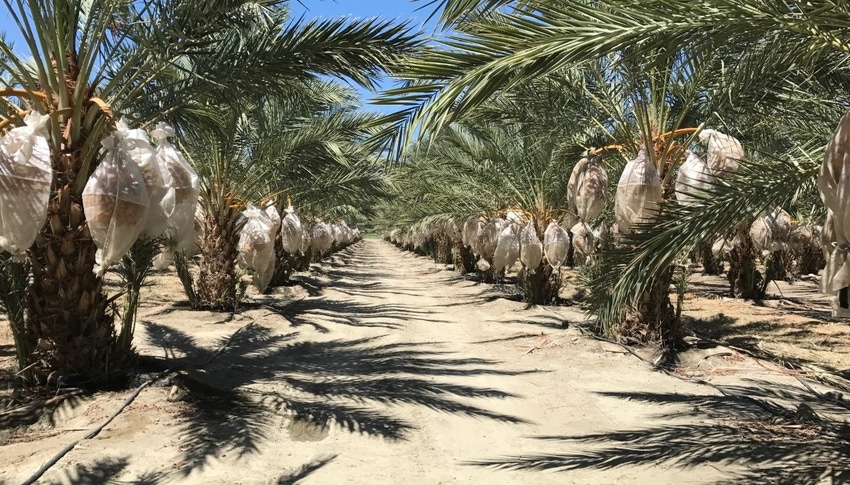
California's $86 million date industry produces more than half of the nation's dates. Most of the fruit is grown in the arid Coachella Valley. Despite efforts by growers to conserve water, data was lacking on date palms' actual water use to refine the best irrigation management for the crop until a recent research project led by Ali Montazar, UC Cooperative Extension irrigation and water management advisor for Imperial and Riverside counties.
“California dates are grown in the hottest and most arid climate in North America and require substantial amounts of water in order to bring a successful crop to fruition,” Albert Keck, Coachella Valley date grower and chairman of the California Date Commission, wrote in a letter of support for this project. “In addition, there is scant modern research specifically and technically focused on growing dates in North America.”
Montazar said there is a lack of irrigation management information on date palms worldwide.
“The information developed in this study is expected to have a worldwide impact,” he said.
To determine the evapotranspiration rate and crop coefficients for California date palms, Montazar teamed up with scientists at UC Davis, California Department of Water Resources, USDA Agricultural Research Service, and USDA Salinity Laboratory.
Research in six date orchards
The experiment was carried out in six date orchards in the Coachella and Imperial valleys. The sites represent various soil types and conditions, irrigation management practices, canopy characteristics, and the most common date cultivars in the region.
“The findings of the project indicate that there is considerable variability in date palm consumptive water use, both spatially and temporally,” Montazar said. In other words, the amount of water the trees use varies considerably depending on each site's growing conditions.
He estimated the water needs for date palms planted in different soil types in the low desert region.
“Growers will be able to use the science-based information and tools developed by this project to determine their date palm water needs and optimize the efficiency of water and fertilizer use in their groves,” Montazar said.
The peer-reviewed article “Determination of Actual Evapotranspiration and Crop Coefficients of California Date Palms Using the Residual of Energy Balance Approach” is published in the journal MDPI Water at https://www.mdpi.com/2073-4441/12/8/2253.
Potential to yield dividends
“With a large quantity of new date plantings in the region, coupled with increasingly limited water resources in the Colorado River Basin Watershed, the knowledge anticipated to be developed by this research project has the potential to yield large dividends through not only improved water use efficiency, but also best management practices and crop quality,” said Keck of the California Date Commission.
Although the research focused on Coachella Valley dates, Montazar said the results are likely to be useful to growers who have orchards with similar varieties, irrigation practices, and canopy and soil features in other locations.
Montazar's co-authors are Robert Krueger of the USDA-ARS National Clonal Germplasm Repository for Citrus and Dates; Dennis Corwin of USDA-ARS U.S. Salinity Laboratory; Alireza Pourreza UC Cooperative Extension specialist based at UC Davis Department of Biological and Agricultural Engineering; Cayle Little of California Department of Water Resources; Sonia Rios, UC Cooperative Extension advisor in Riverside County; and Richard L. Snyder UC Cooperative Extension specialist emeritus in the UC Davis Department of Land, Air and Water Resources.
The date palm irrigation project was funded by the CDFA Specialty Crop Block Grant Program.
Source: University of California Division of Agriculture and Natural Resources, which is solely responsible for the information provided and is wholly owned by the source. Informa Business Media and all its subsidiaries are not responsible for any of the content contained in this information asset.
About the Author(s)
You May Also Like




